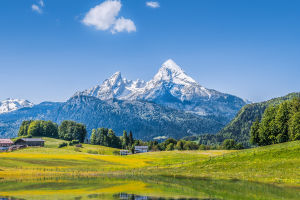Oranges reach acceptable maturity about 6-12 months or even 14 months after flowering and can be harvested 2-3 months before they are overripe.
The best time to harvest oranges depends greatly on the variety and region. In the United States, navel oranges are usually harvested from June to October, while Valencia oranges are usually harvested from March to October. Citrus growers in Florida report that they can harvest oranges all year round except in summer. You can tell it's time to harvest the oranges when you see a few ripe oranges falling off the tree.
However, when it comes to oranges used to produce juice, harvest times are different. In this case, farmers cannot stop at judging the external characteristics of the fruit to decide whether to harvest or not. Fruit-producing companies need to base their purchasing decisions on certain characteristics, such as acid, sugar and fruit essence. Therefore, producers need to use special portable equipment to measure these parameters.
The fruit of oranges is traditionally picked by hand, using a combination of twisting and pulling the wrist. Some growers use shears or clippers, and cut off the stems. This is very common when harvesting fruit with very thin peels.
However, over the past decade, mechanical harvesting has been a strong trend, especially in the US state of Florida. To minimize costs through labor-saving technology, growers use giant vibrators attached to tractors. "In less than 15 minutes, the machine shook 36,000 pounds of oranges from 100 trees, caught the fruit, and tossed it into a large storage cart."
"It would have taken four pickers a full day to do it," reports one orange farmer. Yet some machines simply don't work on smaller, older, more irregular fields in central Florida. Machines are difficult to use on Valencia's orange trees, as shaking them risks dislodging much of the next year's fruit prematurely.
In general, a healthy and mature orange tree produces 200-350 oranges.
However, experienced orange farmers, after years of practice, can harvest 400 to 600 oranges per tree. Under the dense planting system, with 400 trees per hectare, the expected yield for an experienced farmer would be 40-50 tons per hectare. Note that 1 ton = 1,000 kilograms = 2,200 pounds, and 1 hectare = 2.47 acres = 10,000 square meters.
When it comes to oranges, everyone must compare it with mandarin. Both are fruits of citrus plants. They have similar taste and are rich in nutrients. They are fruits that cannot be missed in autumn and winter. Orange is one of the four famous fruits in the world. It is sweet and sour, with high nutritional value, and is deeply loved by people.
Oranges are rich in nutrients, beta-carotene, citric acid, vitamin A, vitamin B group, alkenes, alcohols, aldehydes and other substances. In addition, oranges also contain magnesium, zinc, calcium, iron, phosphorus, potassium and other mineral elements and inorganic salts, cellulose and pectin.
Sweet and sour oranges have almost become synonymous with vitamin C, and the content is the most abundant. Although its content is not as high as that of kiwifruit, the king of VC, the content of edible parts per 100g can also reach about 30mg.
Fragrant and sweet oranges have a water content of up to 87%. Oranges contain active ingredients such as hesperidin and naringenin, which play a certain role in human health care.


